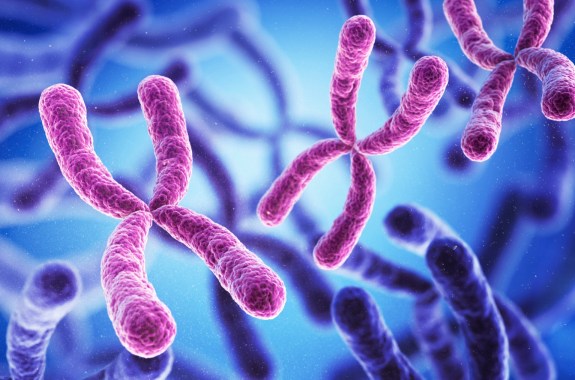Educate
Science Friday partners with educators and scientists to create free STEM activities, lessons, and resources for all learners.
Design Your Own Wind Powered Turbine
Learn the parts of a wind turbine, build your own out of recyclable materials, and test it to determine how to harnesses the most wind.
Colorful Chromosomes
In this activity, students review how human physical traits, such as eye color, are determined by specific segments of genes. Students will use basic crafts materials to build a simplified model of a pair of chromosomes that represents some of their own physical traits. Then students will compare and contrast their models, to determine which traits are most frequently found among their classmates and therefore can be called high frequency traits.
Brine Shrimp: Getting to Know a Salt Water Arthropod
In this activity, students will assemble a small saltwater aquarium to raise and observe brine shrimp. Then students will observe and record the growth of brine shrimp through various stages of their life cycle, and examine their various anatomical features.
Pinhole Viewer
By building their own pinhole camera, students will learn how cameras, telescopes, and their own eyes use light in similar ways.
Fossil Detectives: Use Paleontology To Solve Dino Mysteries
Act like a fossil detective—or paleontologist—to observe and examine a set of fossils to classify them as body fossils and trace fossils.
Delicious Smelling Chemistry
Use household materials to investigate and explore your ability to smell an odor, then compare and contrast results to determine if some individuals have a better sense of smell than others. Observe the Maillard reaction and how different odor molecules are released into the air.
Make a Speaker
In this activity, students will learn how an electromagnet works by making a simple one. Using this knowledge, students will design a diagram to make a working speaker using household materials. Then students will follow instructions on one method of making a speaker, and test their own designs to compare results.
Glowing in the Dark: Testing Phosphorescence
Learn about phosphorescence and how certain materials can absorb and store energy from a light source. Then discover which type of light gets the brightest glow from a glow-in-the-dark star.
How to Cultivate Moss
In this activity, to learn about the biological needs of mosses, students will grow and maintain their own moss terrarium. Through daily maintenance and observation, students will identify those factors necessary for the successful cultivation of moss.
Building A Solar House
Buildings that are called “green” or “environmentally sustainable” are designed to use energy as efficiently as possible. In Missouri, Washington University’s Tyson Living Learning Center achieves sustainability by incorporating green technologies in different ways, including the use of solar panels. In this activity, students will explore how solar panels work by building a simple circuit, a series circuit and a parallel circuit, using a solar panel to light a bulb and comparing which method yields the brightest light. Then students will build a solar-powered house using a shoebox, and test some variables to determine the most efficient way to harness solar energy to power a model home.



